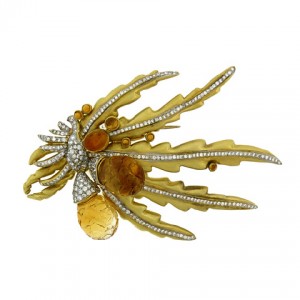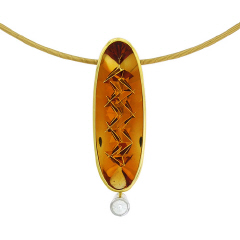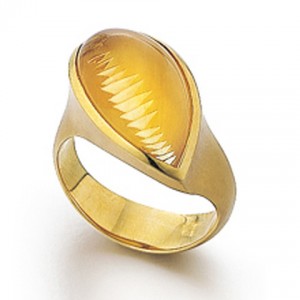
Marilyn Cooperman's abstracted palm tree design, with 18K gold and diamond leaves and carved citrine coconuts. 
- A 20.91 carat citrine pendant faceted and designed by Tom Munsteiner
Quartz comes in many alluring forms: amethyst, rose quartz, smoky quartz, the colorless variety museums refer to as “rock crystal,” and this month’s birthstone, citrine.
Until recently, widespread availability made quartz among the least expensive gemstones, but quality amethyst and citrine with good clarity and rich color are getting harder to find, which is driving prices up.
This sunny gem is still one of the best values for the dollar, however, so take advantage of that while it lasts. As you can see by the jewelry pictured here from the Aaron Faber Gallery, citrine ranges in color from pale buttery yellow to dark honey.
Brazil is the main source of all quartz, including citrine and amethyst, which forms in crystal-lined pockets called geodes. Citrine is often sold erroneously as topaz, a more expensive gem that also comes mainly from Brazil.

Citrine became popular in jewelry during World War II when other precious gemstones were in short supply and yellow quartz could provide the chunky stones and rich color required by the cocktail jewelry of that era.

